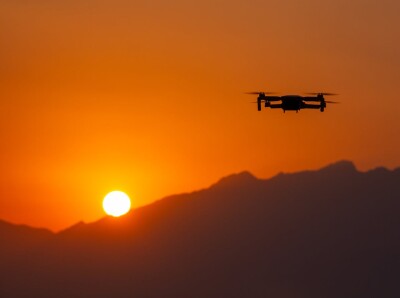In front of a packed Mirage Theater in Las Vegas, the Federal Aviation Administration (FAA) administrator, Stephen Dickson, delivered a riveting speech in which he recounted the comprehensive chronology that has taken our industry this far and then outlined his agency’s plans for short-, medium-, and long-term regulation.
“I want to thank all of you for being here, your presence, your leadership, your engagement, speak volumes to me, and it's so important to the innovation that's going on right now. Over the last 18 months as we all know a lot of these events have had to go virtual,” Administrator Dickson said. “But our work to move forward together to safely scale and integrate routine drone operations into the National Airspace has continued to move at a rapid pace. In many respects, you know, I truly think this is the most exciting period in aviation aerospace history.”
Administrator Dickson systematically addressed various aspects of current regulation and offered the riveted audience a blueprint of the Agency’s plans for the drone industry.
“At the FAA, we're focused on establishing drone policy that ensures safe integration into the Airspace System. But at the same time, doesn't stifle the advances in the innovation that we see happening in places like Georgia Tech and from many of the folks in this room. The public perception, though, fully expects all aspects of aviation to be as safe as commercial airlines have become.” Dickson said.
When addressing the role his agency is playing in the massive deployment of unmanned vehicles into the national airspace (NAS), Dickson detailed his vision for his administration.
“My role as FAA administrator is to figure out how to support these emerging technologies, while maintaining the unwavering safety commitment that the public has come to expect from the Agency. Finding this balance is especially challenging, because it crosses so many domains, regulations, infrastructure, technology, operations, and societal perceptions. So, we are taking a systems approach and an enterprise-wide approach in which we can no longer give approvals and look at issues by individual FAA lines of business, we really have to take a holistic enterprise approach to these issues.”
Then Dickson talked about the pace of technology versus the pace of regulation covering that technology and gave the audience some advice.
“But please don't wait for the FAA to issue a rule. There's a lot that we can do now, and industry can help to take the lead by encouraging public acceptance now.” Dickson emphasizesd.
With regards to the issue of certification, Dickson gave the plenary some good news regarding the strict protocols that the FAA enforces to authorize new aerial platforms to join the NAS.
“This is not something that's five or 10 years in the future. We've got several UAM aircraft certification processes right now. And several companies anticipate flying initial UAM operations in the year 2024. So, this is really right around the corner.” Dickson revealed.
Then it was time to talk about the immediate future of regulations and the important topic of flights beyond visual line of sight (BVLOS).
“In June, we created the aviation rulemaking committee or ARC by selecting 90 members and they started work immediately. They're looking closely at the safety, security, environmental and other policy needs, as well as societal benefits of these operations,” Dickson elaborated. “Now later this year around the Thanksgiving timeframe, we should receive the committee's final recommendations, and that'll help us draft the rule for BVLOS. This should result in more predictability for drone manufacturers and operators, which in turn, will pave the way for routine package delivery, infrastructure inspection, and other more complex drone operations beyond visual line of sight of the remote pilot.”
Dickson finished his remarks by inspiring the audience to maintain the pace of innovation with a word of caution for safety and by making sure the USA continues its leadership role in the aviation industry.
“We've always got to approach safety from a standpoint of humility, from a standpoint of managing risk, and really understanding what risks we are accepting as we move forward,” Dickson concluded. “Given the rapid advancements that are happening in the field, it's especially important that safety always remain a top priority, but certainly not a barrier to progress. This way, the innovation that we're seeing, such as the swarming drones from Georgia Tech or the vaccine delivery in North Carolina will start to be everyday applications. They can grow safely and gain public acceptance and deliver tremendous value as the United States continues to lead the world in the aerospace sector.”




.jpeg.small.400x400.jpg)










Comments